Black Mesa - Oklahoma State Highpoint
Oklahoma has done a good job making a trail to its highest point and protecting the surrounding terrain by making it a nature preserve. The highpoint is an isolated 80-acre section of Black Mesa State Park. A nine foot monument was donated by the The Tulsa Tribune. There is a nice trailhead with restrooms, the trail is open dawn to dusk. Overall it is a walk in the park, the only issues to be aware of are the summer heat, high winds or snakes. Black Mesa does have higher sections in Colorado, the mesa is actually 45 miles long reaching Colorado and New Mexico along with Oklahoma. Cimarron County is the only one, of America's 3,070 counties that touches as many as four states.
Elevation: 4,973 feet
Distance: 4.2 miles one-way
Elevation Gain: 775 feet
Access: Paved
State Highpointing
Access
From Kenton, go east on County Road 325 for 0.6 miles to a paved road on the left with a sign pointing to Colorado. Turn left and follow for 5 miles to the Black Mesa Preserve trailhead parking.
Route
The trail is well signed the entire route, some with mile markers. The route has three legs. The first is about 2.5 miles of easy walking below the mesa on an old road. The second section is a half mile of uphill climb where the trail gains the mesa top. The final mile is flat again on the top of the mesa. A sign at the trailhead suggests that a fast-paced, round-trip hike to the monument can be made in 3.5 hours. Others taking a leisurely pace should allow at least 5 hours.
East Face - Kansas 53 miles northeast, New York City 1,605 miles
South Face - Texas 31 miles due south
West Face - New Mexico 1,299
feet, Los Angeles 895 miles
North Face - Colorado 4.7 miles
The Original Jurassic Park
140 million years ago, during the Triassic and Jurassic Periods, dinosaurs roamed this region. The climate and landscape were dramatically different. Weather of that time was hot, wet and muggy. This area was a large swamp which was covered with giant ferns, cypress and palm-like trees. A variety of dinosaur species lived here. Among the plant-eating species were the Brontosaurus and Stegosaurus. A carnivorous species was the Allosaurus.
The Great Plains - Ancestral Home of Plains Indians
Prior to settlement by pioneers, this region was part of the homeland of Plains Indian tribes. The Kiowa, Commanche, Cheyenne and Arapahoe lived a nomadic life as they followed the vast herds of buffalo which roamed the Great Plains. With the arrival of the horse in the 1600's, these tribes became much more mobile. The Kiowa and Comanche were particularly well-known as excellent horsemen. The Plains Indians aggressively defended their homeland against introducers. Wagon trains on the nearby Santa Fe Trail were subject to Indian attack. Following the Civil War, the U.S. Army focused much of its attention on removal of these tribes from the Plains. The extermination of the buffalo, along with the Army's bloody campaigns against the southern Plains tribes in 1867-69, eventually forced these tribes to live on reservations in southwest Oklahoma.
Black Mesa Nature Preserve
The 1600 acre preserve contains 31 rare plant and animal species, four distinct plant communities within the preserve. Because of the semi-arid climate of the region, plant growth is slow and damage is long-lasting so tread lightly. The preserve is cooperatively managed by the Oklahoma Tourism and Recreation Department and the Oklahoma Nature Conservancy. All access is by foot on the designated hiking trails.
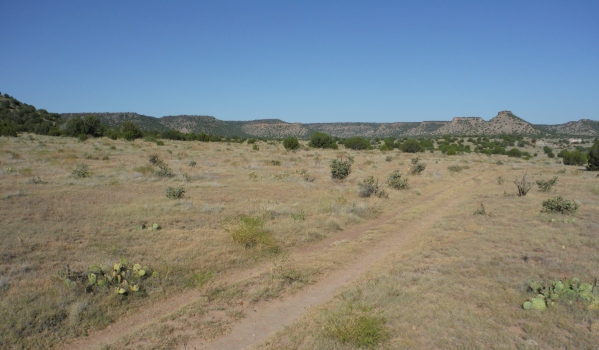
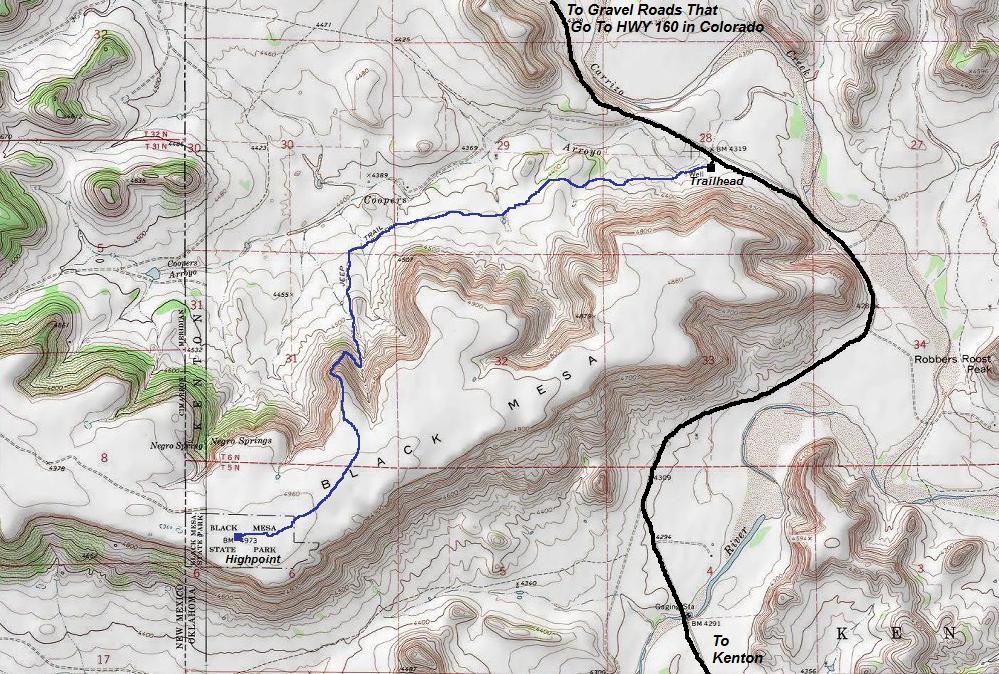
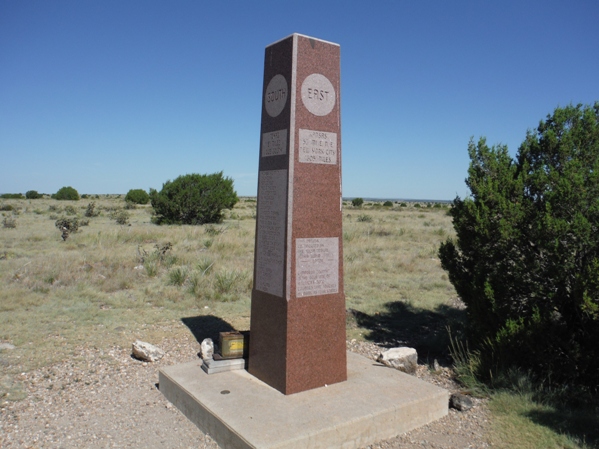
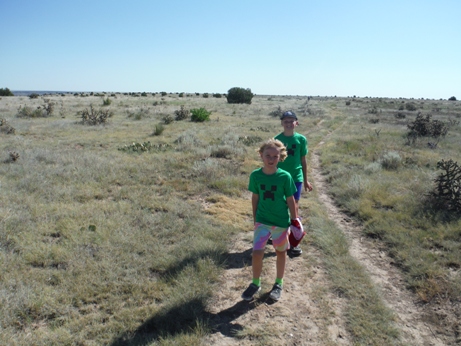
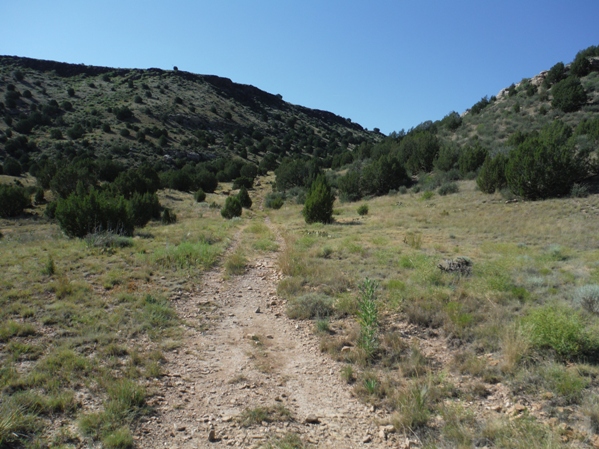
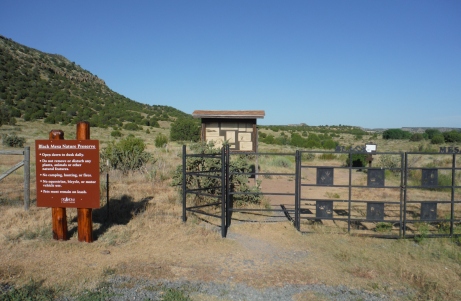
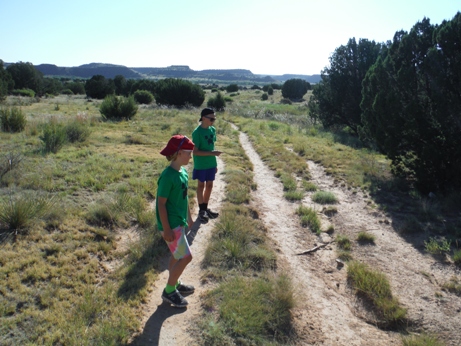
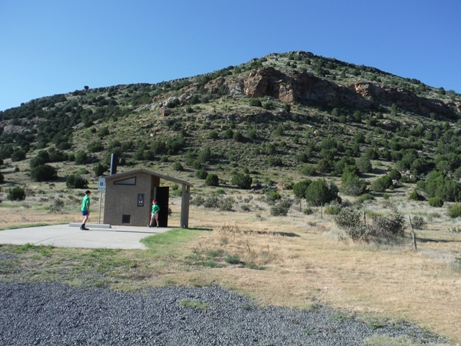
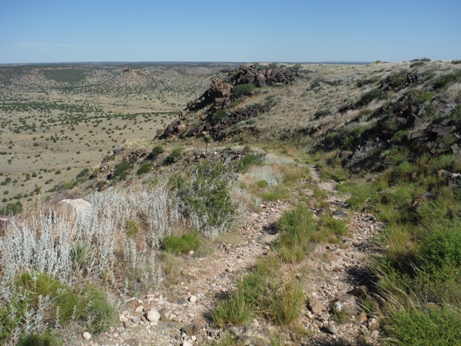
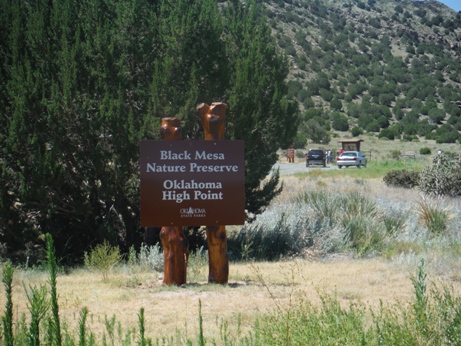
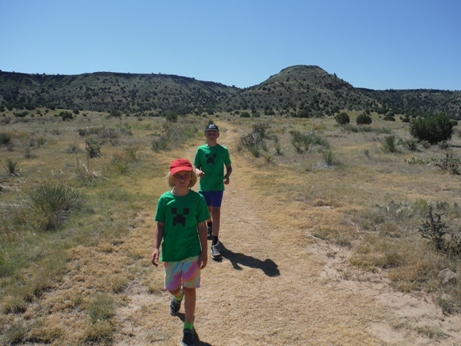
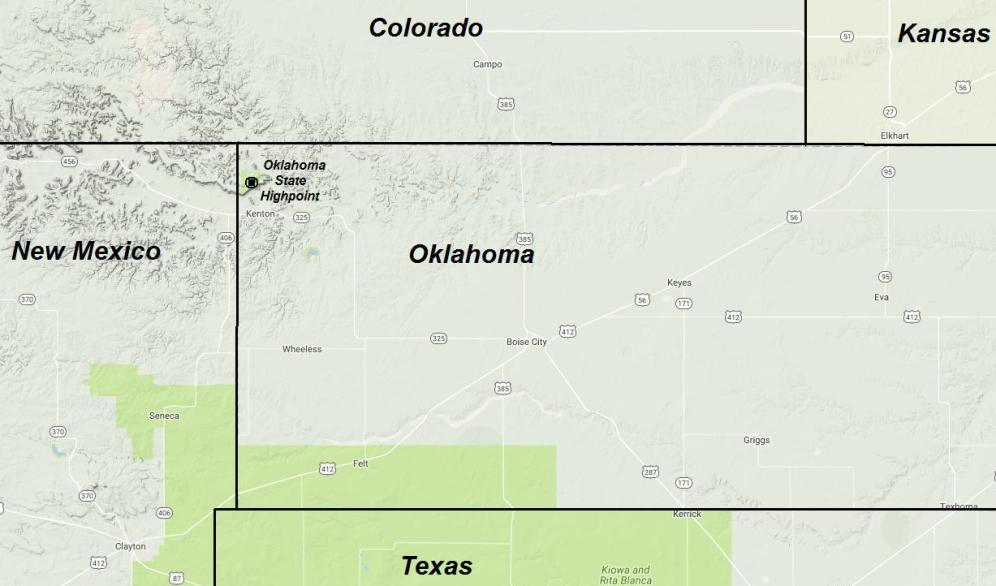
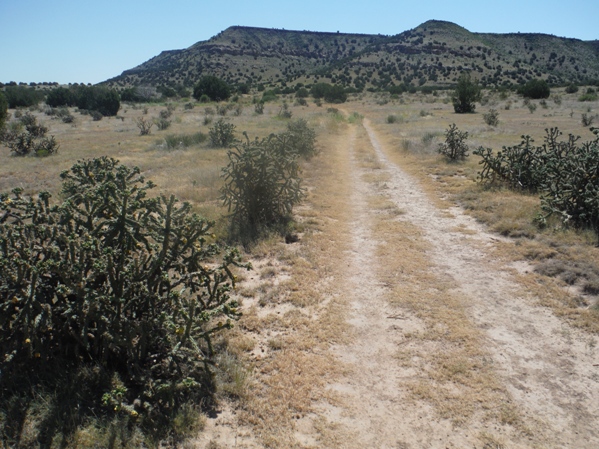

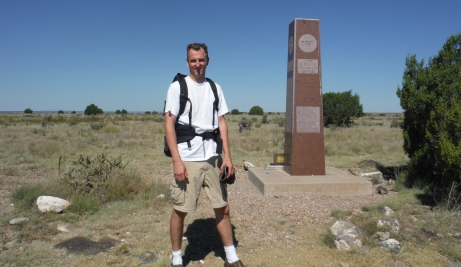
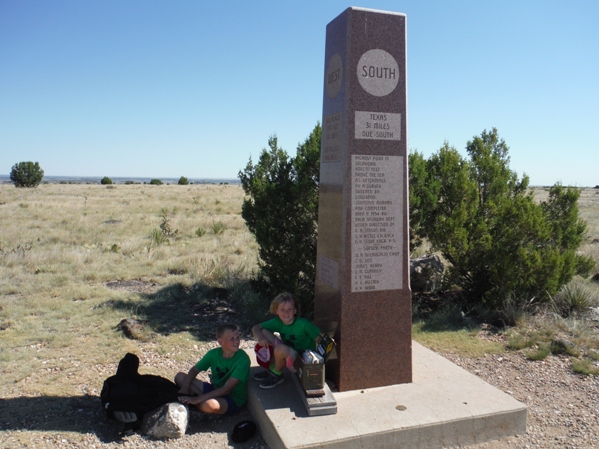
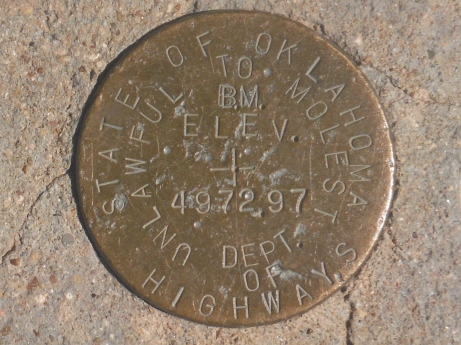
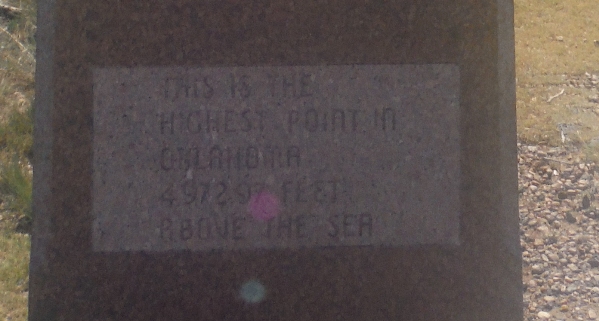
Trailhead
Mile 2 Bench
Trail coming up to the mesa top
Almost at the monument
Oklahoma state highpoint
Benchmark for the highpoint
First few miles goes across this flat terrain
Interesting brush
Going up the canyon to climb the mesa
Topographic map showing trail route to the monument

















